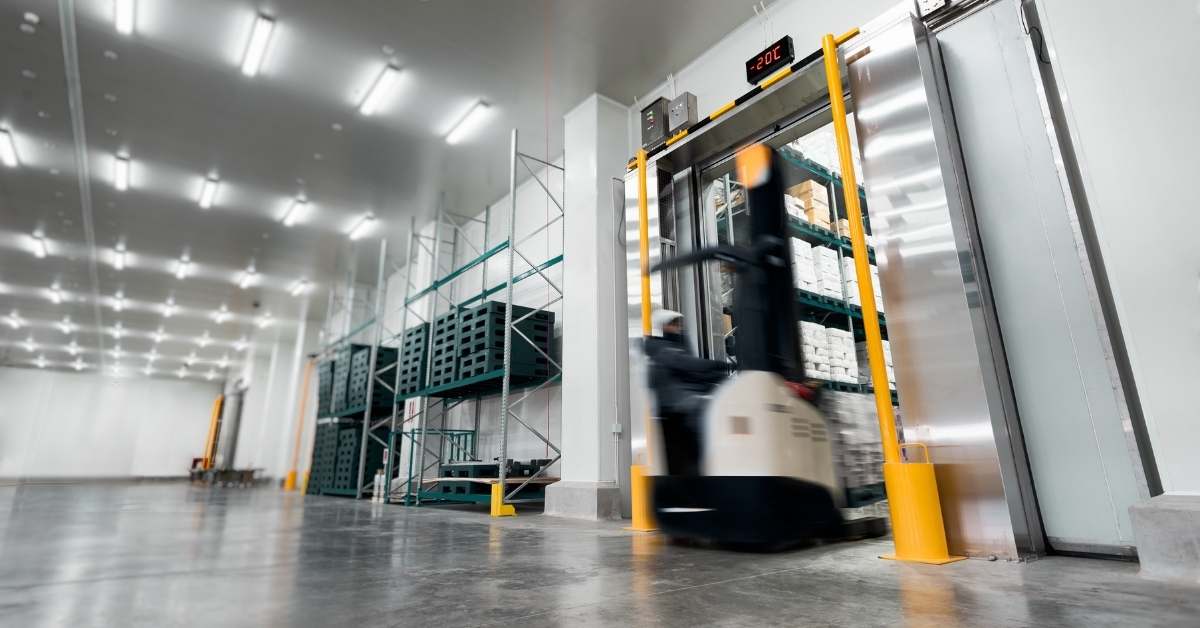Some products of the food, pharmaceutical and chemical industries need to preserve a low and constant temperature in order to avoid the irreversible alteration of the properties. A thermal shock, in fact, would seriously compromise the quality and safety of the involved products.
For this purpose, the use of high-performance insulating panels and joints and proper insulation of the spaces represent the main technical solutions to be adopted right from the design phase.
From the production plant to the point of sale, there is a succession of various steps that close a cycle called the cold chain.
But what is the cold chain?
It is a cycle that serves to ensure synergy within an integrated supply chain to ensure that goods are preserved within a certain temperature range, usually below -18 ° C. All stages of the supply chain are involved: from transportation to storage to the shelves.
The risks of interruption of the cold chain are serious and in the agri-food sector they range from the reduction of the shelf life of products to their deterioration up to the overall loss of entire batches.
The food cold chain involves rooms for the processing of products, warehouses for storage, up to, of course, cold rooms for preservation.
The large-scale retail trade knows this well, and has improved processes over time, making them more efficient, reducing the risk of interruption of the cold chain through adequate thermal insulation and working with strict cleanliness and hygiene of the environment.
In healthcare, the cold chain is key to ensuring that delicate pharmaceuticals, such as vaccines, reach their destinations without the risk of alterations that would make them unusable or compromise their stability.
The risk factors that could compromise the cold chain of pharmaceuticals, as well as that of food, are related to thermal insulation and include:
- Poor insulation;
- Insulation joints that promote thermal exchange;
- Non-performing insulating panels;
- High thermal transmittance and conductivity of the employed materials.
Preventing the interruption of the cold chain
Maintaining the cold chain means acting with the aim of preventing its interruption. This translates into perfect thermal insulation. This largely depends on what products are used, such as sandwich panels, which guarantee adequate performance.
The correct design of refrigerated environments therefore involves the use of suitable materials for both the external envelope and for the cold rooms and/or the partition walls of the structure. It goes without saying that one of the most critical aspects is precisely the energy consumption which involves the production of CO2 and great costs.
However, the use of high-performance materials for the refrigeration sector makes it possible to achieve optimal results in terms of energy efficiency and sustainability, without neglecting a reduction in maintenance costs.
Good insulation and the improvement of energy performance are implemented through the use of suitable isothermal solutions, such as:
- Walls
- Floors
- Doors
- Roofing
Fulfilling the needs of the refrigeration industry
Isopan insulating panels represent a concrete solution to the needs of the refrigeration industry as they possess ideal technical characteristics for creating both the walls of the external envelope and those of the cold rooms and roofs.
In particular, in the panorama of insulating panels in the cold chain, the three-layer Isofrozen and Isofrozen HT sandwich panels, useful for both external and internal cladding (with variable thicknesses), feature very high thermal insulation performance combined with good reaction and resistance to fire.
Isofrozen panels also prove to be an excellent example of Leaf technology, which reduces heat losses by 20% compared to panels available on the market.
Joints and insulated panels to reduce the risks associated with the interruption of the cold chain
Insulated panels are recursive elements in a large structure, therefore the joints between one panel and another, as well as the thermal bridges generated by openings and doors, are elements of vulnerability that to be addressed.
In particular, in the design of a cold room the objective is to maintain a constant temperature and, therefore, the quality of the joints between the sandwich panels is crucial.
The joint has the function of limiting heat loss by improving the airtightness of the envelope and favouring the correct functioning of the refrigeration system.
There are various types of joints for insulated panels.
The Isofrozen and Isofrozen Ht insulating panels offer a specifically-designed labyrinth joint to optimise the sealing performance of the product in its application to cold rooms with performance comparable to watertightness.
To limit heat dispersion and avoid the interruption of the cold chain, the profiles for cold rooms, i.e. linear elements for fixing and joining the various components of a refrigeration structure also play a part. They are therefore used to connect both insulated panels and discontinuities such as doors and frames.
Therefore, to avoid the risks deriving from the interruption of the cold chain it is essential, during the design phase, to choose high performance materials and structural elements. The most important aspects to consider are:
- Temperature maintenance through correct thermal insulation;
- The airtightness through the use of suitable joints and profiles;
- The capacity to react to fire in case of fires caused by energy overloads;
- Resistance to aggressive cleaning agents, mildew and corrosion.
These elements contribute to reducing consumption and, therefore, also the emissions of greenhouse gases such as CO2.
A sustainable choice for the environment and for the containment of management costs but above all forconsumer health.
Discover the projects dedicated to the Isopan fridge world, download the ebook to learn more about the features of Leaf technology.


